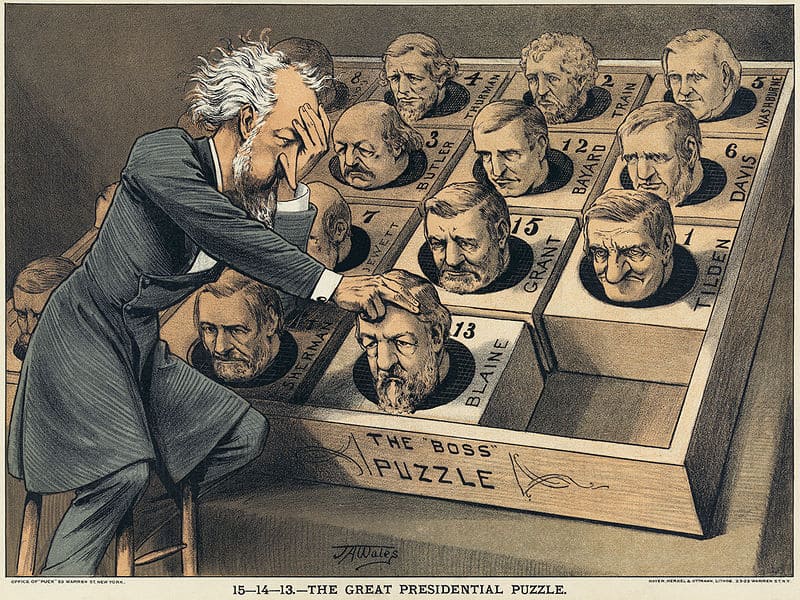
14. The fraudulent Presidential election of 1876
Only once in American history (as of this writing) has a candidate for president achieved an outright majority of the popular vote and failed to win the office. In 1876 Samuel J. Tilden, a Democrat, achieved 50.9% of the popular vote. His Republican opponent, Rutherford B. Hayes, won 47.9%. Yet in an election still closely studied for its many instances of outright fraud, Hayes became the 19th President of the United States. Neither candidate initially had sufficient votes to win the electoral college, Tilden had 184 (needing 185) and Hayes had 165. Twenty electoral votes were disputed.
According to the Constitution, the election should have been decided by a contingent election in the House, as had the election of 1824. Congress instead decided to resolve the issue of the contested electoral votes, most of which were claimed by both sides in the election. The issue centered on four states; South Carolina, Florida, and Louisiana, all of which were still subject to Reconstruction, and Oregon, a state in which Hayes had clearly won the popular vote. As Congress opened its investigation, Tilden needed but one of the twenty disputed votes to win the presidency.

